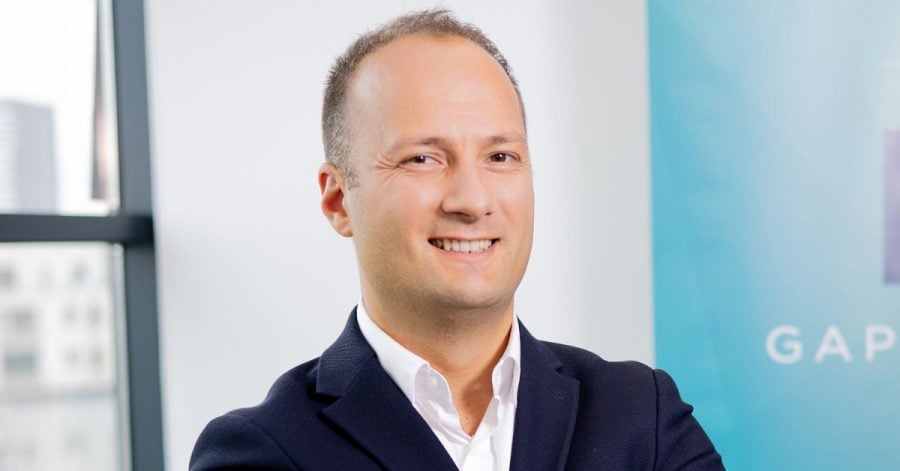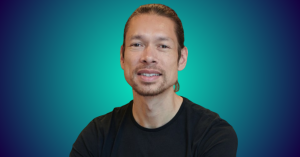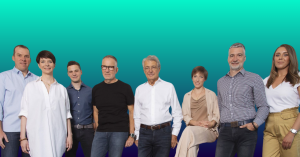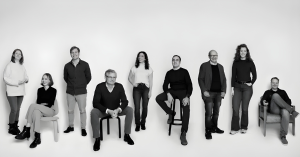“I started my entrepreneurial path in 2010 by organizing and curating TEDxCluj. But the community needed something else, so I extended the interaction beyond the conference,” Cristian Dascalu, the 38-year-old partner at Romanian Gapminder VC, tells me about his career shift from entrepreneurship to helping build startups, and then investing in them.
At GapMinder VC, Cristian focuses on B2B SaaS, automation, and Fintech, among others, since 2017. So far, he has been the lead investor in Cyscale, Soleadify, Ialoc, Flip, Amsimcel, Synaptic, Rayscape (former Xvision), and MedicAI‘s funding rounds, to name a few.
“We have been lucky to be a good fit because it’s not easy to cut lanes through the jungle. It needed a lot of commitment to do the pre-seed and seed accelerator groundwork as it wasn’t that profitable. But it’s about the impact which was created,” he shares about the three teams that joined forces to apply at EIF for Gapminder’s fund: Dan Mihaescu and Sergiu Rosca, the RICAP team coordinated by Alexandru Ruff along with Cristina Toncu and Silvia Ursu; and his team.
Cristian is also the founder of Cluj Hub and the co-founder and managing partner of TechCelerator, a pre-seed and seed accelerator, which is looking to advance AI development and adoption in the region. With both hats on – entrepreneur and investor, we tackle 18 venture capital myths to find out what’s true or false from his experience.
“Through my professional background, I can understand better what the founder’s perspective is. The pitfall of entrepreneurship is that one can dream too much, and not think about the sustainability of the project, the milestones to reach a goal. The VC world offers a conclusion to an entrepreneur.”

Myth-busting with a VC partner – true or false, and why?
#1 Most early-stage investments fail.
Cristian Dascalu, Gapminder VC: True. Most investments fail. From some of them, you recuperate the money and just a small percentage will make a profit. The ideology in VC funds is that each investment is treated as one which should return the entire fund. This comes from the exaggerated assumptions that all are going to fail terribly.
#2 Most VC funds don’t return all cash invested.
At a worldwide level, yes, it’s true. The statistics show that the majority of VC funds are not profitable. But some of them are making huge breakthroughs. The expected returns should be around 2.5x; some will deliver much more, and a big chunk of them will fail and not even return this money.
But innovation in tackling cyber security, global warming, and artificial intelligence, should continue even though sometimes it will not be profitable. Initiatives might fail in terms of returning money, but they don’t when it comes to educating people and bringing disruptive innovations into our lives. Failures are just the needed lessons for innovators.
#3 A small fraction of all deals and funds generate the majority of returns.
True, because we are at high risk, and that is why the investments are being done as a portfolio. You look over your portfolio, not only deal by deal.
When you calculate potential returns, you need to consider that you will take big, but calculated, risks as a VC. This comes counterweighted by the fact that you invest in certain industries, which can be disruptive, and many times disruption is not easy to achieve.
So, you need to make your numbers in a way that is possible to have returns from a small portion and be ready to lose on the majority of the other investments. Everybody aware of this game can decrease the risk because if more money will come into this industry, fewer failures will exist by training faster more entrepreneurs in the disruptive game of innovation.
#4 Founders who target publicity don’t focus enough on product development.
It’s partially true, depending on the object of communication. Entrepreneurship is about dealing with and managing complexity. You need to activate a certain hat or ability and also deactivate it and shift your focus into something, then activate it again, and so on.
It’s a saying that when you launch something, which you are not ashamed of, you will launch too late. So, you need to start talking earlier. But, you should not invest more than 5% in promoting your product. It should be connected to your go-to-market strategy, not vanity metrics.
You have to move from an alpha to a beta product. First, you need to be ready to communicate to potential users that you are present on the market. Then, you need to get back to your product, understand your customers and validate the problem, and prepare your next iteration.
#5 There can be no work-life balance for a startup founder that needs to scale fast in the first 3 years.
True, although I don’t believe in the work-life balance concept. As a founder, you have to be responsible for the work which is needed. Serial entrepreneurs, professionals with more experience in different fields, could shortcut the work they have to put in, but not those who are developing the first projects.
The startup industry has this “mirage” that offers so many gains to bring you on board. The reality is that 90% of entrepreneurs will not arrive to be successful, but they will become complete professionals for sure.
#6 Romanian founders can do amazing things with €200K, compared to U.S. founders that could do the same with €2M (or $), due to their background of being used to scarce resources and because developing a local solution is cheaper.
True, but it’s not only in Eastern Europe, I think it’s about emergent economies everywhere, like South America, Southeast Asia, and Africa. They are the dragons of the tech startup community, ecosystems that could deliver more. I think the AI and deep tech machine learning approaches will help our region a lot because we have mathematics and technology backgrounds.
The challenge and the opportunity would be that in this context, we need cohesion, to get together, to demonstrate critical mass.
Even if we have an affordable cost of living, we need to get out of this comfortable shell and keep in mind that we should deliver the requirements needed in the U.S. markets. Sometimes, in Eastern Europe, we get in love with our solutions, and we don’t validate big enough global problems to build solutions on top.
Small economies have small problems. We should be looking at the global trends outside to be able to deliver, for example, smart city solutions. Because mayors from more developed countries don’t need a tech startup to deliver a bus app. They already have this in their standard stack inside their city hall.
#7 Romania’s tech startup ecosystem is “too early-stage” to fear the economic crisis.
False. There will be an impact as the entire global fundraising landscape changes in 2022.
The time of cheap money in tech has passed. Now is the time for founders to rein in costs and focus on fundamentals. The multiples used last year for company valuations are not the same multiples the industry uses this year.
In terms of the crises and inflation aspects, I don’t think it’s about the development of the ecosystem in Romania, but about the overall resilience of the region, which is not so directly correlated to the challenges happening at this moment in countries like Germany or other bigger impacted economies.
I don’t think there was ever an issue of capital availability for Romanian founders. It’s like that saying “you will always find the money for a great idea”, it’s about the implementation.
#8 Investors are primarily interested in the financial model, it shows everything.
It depends at what stage. True for the later stage, and false for the earlier stage. In the beginning, because you don’t have what financials to show, you should showcase the projected financials because VCs work on the forecasted disruption of your product.
For early-stage startups, the team is essential, followed by the idea, and then the forecast. For a later stage, founders need to offer a certain adoption of the product.
#9 Investors will go for male-led teams, but they think twice about only female ones and invoke the “need for diversity”.
False. We have great examples of women-led companies, even in our portfolio, and the positive ones demonstrate you shouldn’t have that bias. I believe female founders are more focused on sustainability, they are equally hard-working as men, they just need to be seasoned enough with the technology or be backed up by a diverse team of specialists in their fields.
#10 One founder is a red flag and the same goes for Co-CEOs.
False. I wouldn’t consider it a red flag, because we look at the full team; as for co-CEOs, we haven’t experienced it enough. From my experience, the latter one would be a positive one, it can bring more collaboration in the team.
As investors, we are used to the term “soft majority”, which means that not everybody needs to agree, but nobody should not disagree with a certain target. In this case, it’s OK to move ahead.
I see Co-CEOs divide certain departments, one leads 3-4, and the other coordinates 3-4. Connecting with the question before, the perfect case would be to have one female CEO and one male CEO.
#11 CEOs or co-founders don’t need to know it all or be experts in the field they’re building.
True. Again, it’s all about the team or having the experience on your board of advisors. Being a single founder is a challenge, quite impossible most of the time.
#13 You cannot bootstrap a company if you want to scale it fast and globally.
Most of the time, it’s true. But, we have seen cases in the world that proved it’s possible. I wish entrepreneurs could do that because it means that they are growing with the client’s money, which is the “cheapest” money you can get as an investment. But it’s a big goal, you need a good problem to solve with your startup, and to know the customers and validate their needs early on.
#14 Good investors don’t have a pattern, they avoid biases.
False. To become good, you need to specialize and develop a pattern. Every investor has a pattern, they might not look at the industry or vertical, but at the people pattern, a certain type of founder.
#15 In the VC world, entrepreneurs are the products, not what they are building.
Again, in the early stage, this is true because the product is not yet there. For example, Uber didn’t have a product-market fit for around four years, and they got investments due to their vision and team. But, there needs to be a product-thinking mindset as a disclaimer.
#16 When a VC turns down an investment opportunity it means that something is wrong with the company.
False. This is not always the case, it can be due to the product, but it can also mean the company could be very good, but maybe it’s not the right time for the fund as it’s not on their investment thesis.
#17 If VCs invest €500K, they expect the company to grow 5x that amount.
False. Expectations could be by multiplying the revenue, and the traction, not on the money put into the company. During the early stage, you run the company on the investors’ money, not on the generated revenue, so it’s about the expected impact of that money to be ten times more.
#18 Romania doesn’t have that many unicorns because the ecosystem players are divided and don’t work together.
Sort of true, but not exactly how you said it. At this moment, we have an ecosystem, but not a functional one because we need specializations.
We should have players working with startups up until one point, let’s say from A to D, and then pass them to other ecosystem players to help them grow to the next stage. This handing over is missing.
For a startup to achieve greatness, it has to work with more players. As we ask startups to go niche, we have to also promote niches at the startup assistance level. Too many players say they are providing more than they can deliver.
It’s important to experiment, see what you are good at, and then specialize. We have enthusiasm, but next to it, it would be good to have experience. This is one of the reasons why mediocre things come out.
It’s like eating at a Micheline-star restaurant versus at a food court. Sure, at the food court you can find variety, but it lacks that award-star chef experience.







